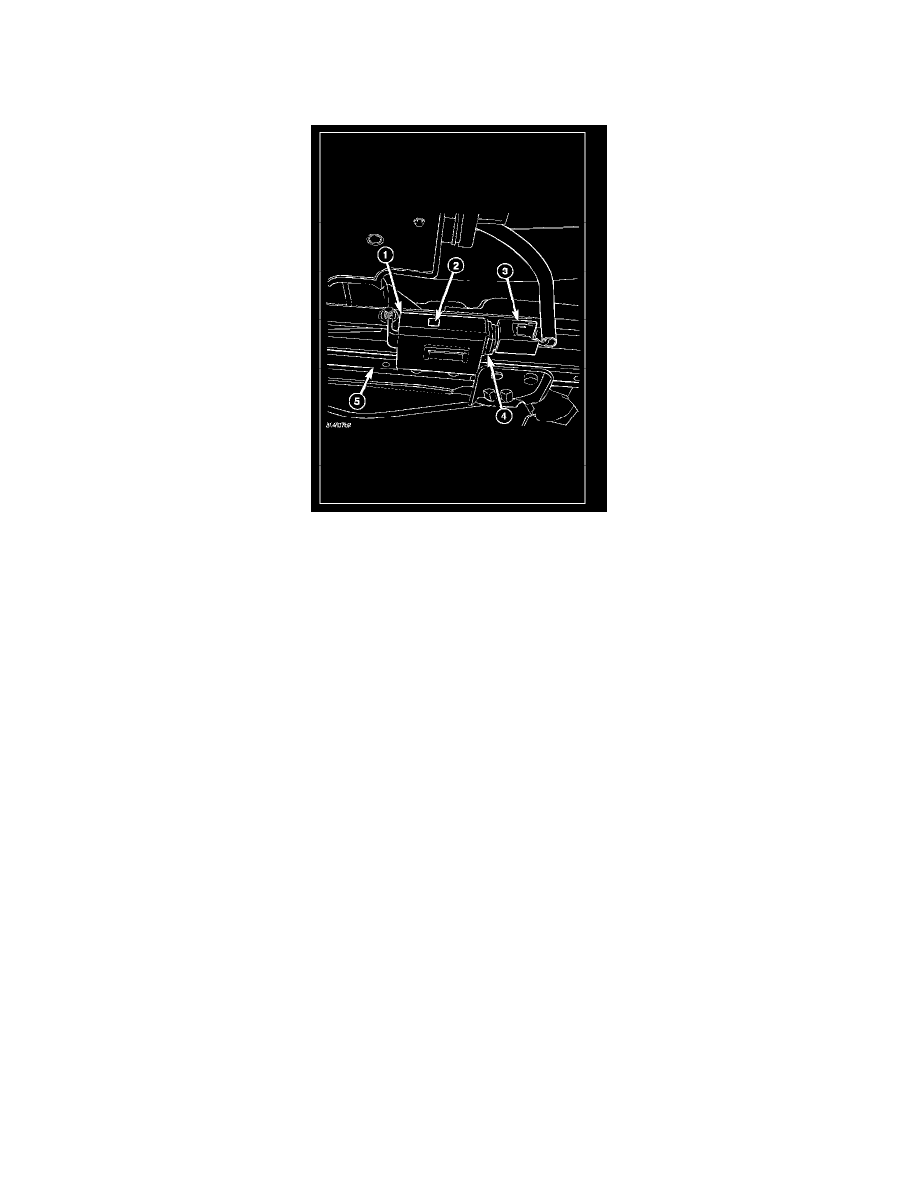Raider V6-3.7L SOHC (2006)

Seat Occupant Sensor: Description and Operation
SENSOR - SEAT TRACK POSITION
DESCRIPTION
The seat track position sensor (1) is a Hall Effect-type sensor. This sensor consists of a Hall Effect Integrated Circuit (IC) chip encased in potting
material within a cavity of the molded plastic sensor housing. The sensor housing has two integral snap features (3) and snaps into a stamped metal
bracket located on the inboard side of one of the seat adjuster tracks on each front seat. A molded connector receptacle (2) integral to the sensor housing
is connected to the vehicle electrical system through a connector and take out of the driver or passenger seat wire harness beneath the front seat cushion
frame.
The seat track position sensor cannot be adjusted or repaired and, if faulty or damaged, the entire sensor must be replaced.
OPERATION
The seat track position sensor is designed to provide a seat position data input to the Occupant Classification Module (OCM) indicating whether the
driver side or passenger side front seat is in a full forward or a not full forward position. The OCM sends electronic seat position messages to the
Occupant Restraint Controller (ORC) over the Controller Area Network (CAN) data bus. The ORC uses this data as an additional logic input for use in
determining the appropriate deployment force to be used when deploying the multistage front airbags.
The seat track position sensor receives a nominal five volt supply from the OCM. The sensor communicates the seat position by modulating the voltage
returned to the OCM on a sensor data circuit. The OCM also monitors the condition of the sensor circuits and will store a Diagnostic Trouble Code
(DTC) for any fault that is detected, then send messages to the ORC to illuminate the airbag indicator in the instrument cluster. For proper diagnosis of
the seat track position sensor, a diagnostic scan tool is required. Refer to the appropriate diagnostic information.
